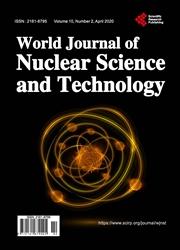Is There an Incremental Prognostic Value of Evaluating Left Ventricular Dyssynchrony by Gated SPECT in Patients with Systolic Heart Failure and Altered Myocardial Sympathetic Innervation as Evaluated by Cardiac I-123 mIBG Imaging?
引用次数: 0
Abstract
Background: Altered myocardial sympathetic innervation activity (AMSI) is known to be present in systolic heart failure patients (SHF) and recently SPECT imaging using I-123 mIBG heart to mediastinum (H/M) ratio <1.6 has been shown to predict MACE in the ADMIRE-HF trial. Left ventricular mechanical dyssynchrony (LVMD) is known to be present in a substantial number of SHF patients and has been studied mainly to guide CRT therapy. Recently gated SPECT has shown promise to provide an accurate assessment of LVMD. It remains unclear how the combination of AMSI and LVMD collectively affect clinical outcomes and other cardiovascular parameters. Objectives: The objectives are to examine the clinical characteristics and incremental prognostic value for MACE of LVMD determined by SPECT in SHF patients with or without abnormal cardiac MIBG uptake (H/M ratio < 1.6). Methods: Out of 30 SHF patients who participated from our institution in the ADMIRE-HF trial studying MIBG based AMSI, we included 22 patients with abnormal MIBG H/M ratio of <1.6. We performed gated SPECT LVMD analysis on these patients using the Emory Cardiac Toolbox. The 2 SPECT variables for LVMD assessed were histogram bandwidth and phase standard deviation both of which assess the extent of dispersion of LV activation during contraction as a marker of LVMD. Patients were followed up for a mean period of 6 years. The primary end point was mortality from any cause and secondary end point was heart failure admission or myocardial infarction or ICD shock. Results: 2 Groups were defined: Group A: n = 17 with H/M MIBG ratio < 1.6 and +LVMD and Group B, n = 5 H/M MIBG ratio < 1.6 and −LVMD. Baseline characteristics, cardiac risk factors and medications were comparable between both groups. LVEF was lower and RBBB was less common in Group A. There was no statistical difference in achievement of primary or secondary end points in the two groups including death heart failure readmissions, ICD shocks or MI. Conclusions: In our pilot study, we did not find definitive value of adding SPECT based LVMD to abnormal cardiac MIBG imaging in SHF patients with regards to predicting outcomes. Although our sample size is too small to make any definitive conclusions, it is possible that LVMD works independently through different pathways in the progression of SHF and hence may not necessarily add incremental value to AMSI determination using MIBG.心肌I-123 mIBG成像评价收缩期心力衰竭和心肌交感神经改变的患者,门控SPECT评价左室非同步化有增加的预后价值吗?
背景:心肌交感神经活动(AMSI)改变已知存在于收缩期心力衰竭患者(SHF)中,最近在钦佩心力衰竭试验中,使用I-123 mIBG心脏与纵隔(H/M)比<1.6的SPECT成像已被证明可以预测MACE。已知大量SHF患者存在左心室机械不同步(LVMD),研究主要是为了指导CRT治疗。最近,门控SPECT显示出了提供精确评估LVMD的希望。目前尚不清楚AMSI和LVMD联合如何共同影响临床结果和其他心血管参数。目的:探讨伴有或不伴有心脏MIBG摄取异常(H/M比值< 1.6)的SHF患者SPECT检测LVMD MACE的临床特征及增量预后价值。方法:在我院参与研究基于MIBG的AMSI的admie - hf试验的30例SHF患者中,我们纳入了22例MIBG H/M比异常<1.6的患者。我们使用Emory心脏工具箱对这些患者进行了门控SPECT LVMD分析。评估LVMD的两个SPECT变量是直方图带宽和相位标准偏差,它们都评估了收缩期间LV激活的分散程度,作为LVMD的标志。患者平均随访时间为6年。主要终点是任何原因的死亡率,次要终点是心力衰竭入院或心肌梗死或ICD休克。结果:分为两组:A组n = 17, H/M MIBG比< 1.6,+LVMD; B组n = 5, H/M MIBG比< 1.6,- LVMD。两组之间的基线特征、心脏危险因素和药物具有可比性。在a组中,LVEF较低,RBBB较少见。两组在主要或次要终点的实现上没有统计学差异,包括死亡心力衰竭再入院、ICD休克或心肌梗死。结论:在我们的初步研究中,我们没有发现在预测SHF患者异常心脏MIBG成像中添加SPECT的LVMD的明确价值。虽然我们的样本量太小,无法得出任何明确的结论,但有可能LVMD在SHF的进展中通过不同的途径独立起作用,因此不一定会增加使用MIBG测定AMSI的增加值。
本文章由计算机程序翻译,如有差异,请以英文原文为准。
求助全文
约1分钟内获得全文
求助全文

 求助内容:
求助内容: 应助结果提醒方式:
应助结果提醒方式:


